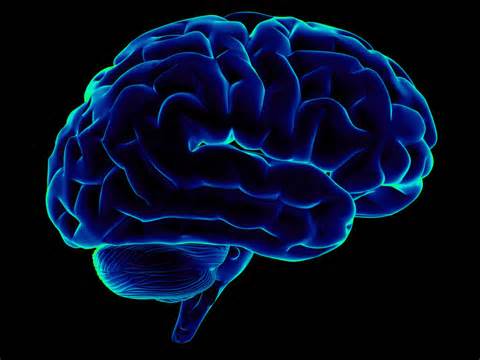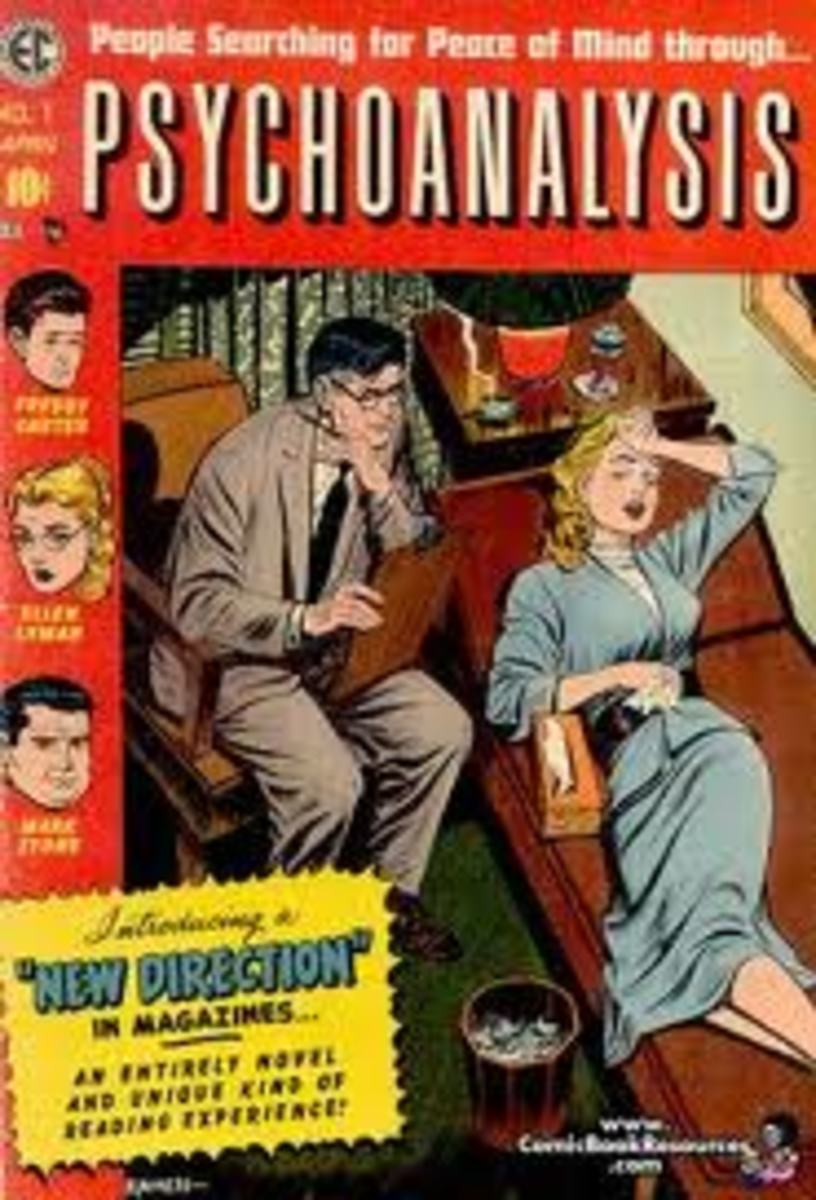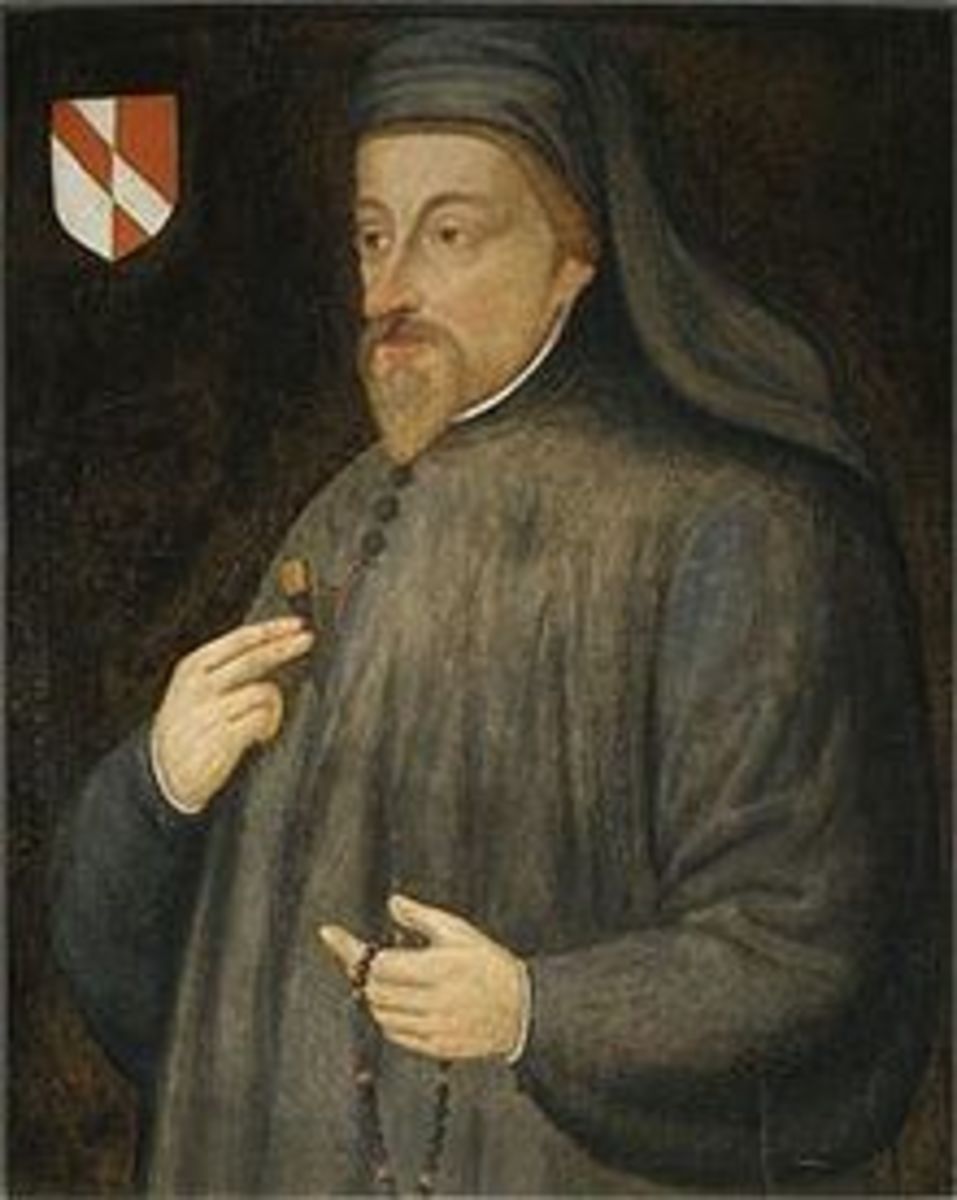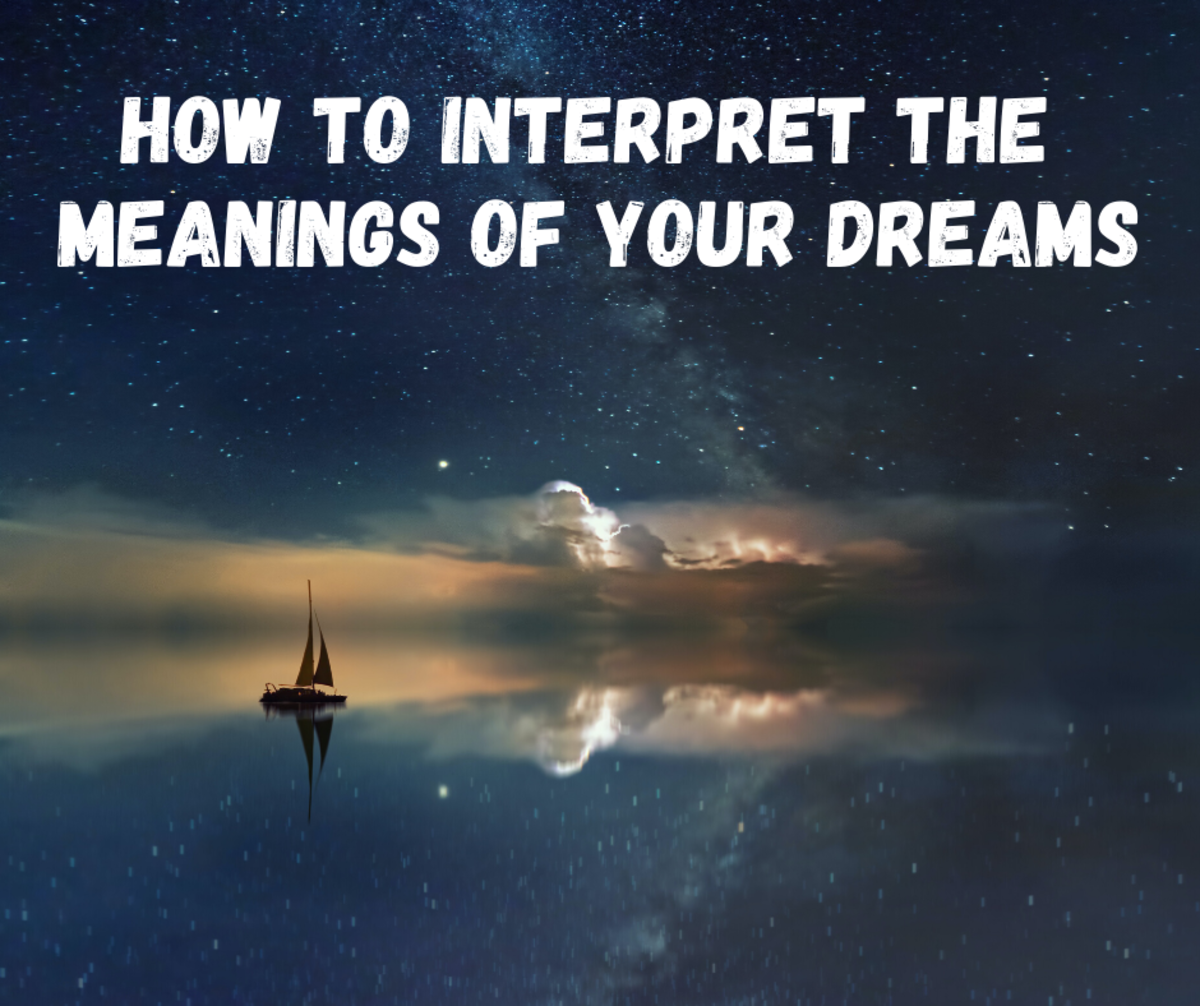A Brief History of Dream Interpretation
Introduction
Scholars are not sure where or when the origins of dream interpretation began or how long dream analysis has been carried out. It is probably a good bet that the interpretation and analysis of people’s dreams has been part of society in one form or another as long as we have been having dreams and have been able to discuss them. Early man must have found dreams to be both frightening and fascinating and must have been confused by this bizarre state of consciousness. It is clear that many ancient civilizations placed great significance on the events occurring in dreams as well as the possible meaning of these dream-state events. These interpretations were used to help people shed light on the events that occurred in their waking lives. This article briefly reviews the history of dream interpretation from early civilizations to psychological theories to modern biologically-oriented theories regarding the purpose our dreams serve.

Early Cultures and Dream Analysis
Mesopotamia
The people of Mesopotamia (now Iraq) left behind some of the earliest pictographic writings dating back to approximately 3100 B.C. (Oppenheim, 1956). By 2700 B.C. they also used a cuneiform writing type consisting of marks on clay tablets and cylinders. It is in these writings that the earliest recorded notions of dream interpretations occur. The king Gudea, who ruled around 2220 B.C., had several dreams preserved that tell the story of a puzzling dream he had and his quest using a goddess to help him understand its meaning. This is one of the earliest records demonstrating the belief that there was an association between the divine, people’s dreams, and the hidden meanings in dreams (Oppenheim, 1956).
In approximately 2000 B.C. the mythic hero Gilgamesh appeared for the first time (the epic was expanded in later Assyrian mythology). He is guided in his quest by his dreams and his epic also contains the first known recurring dream, the idea that dreams can predict future misfortune, and dreams can be interpreted by means of several different techniques (Van de Castle, 1994). Oppenheim (1956) reports that these early dreams were categorized in three ways:
1. Message dreams that occur as communications from deities to help leaders
with decision making.
2. Prophetic (Mantic) dreams that could be used to see the future.
3. Warning dreams with symbolic content.
Thus, even nearly 5000 years ago dreams were considered to have message content and to communicate these messages symbolically. Similar ideas are found in other cultures and later clinical theories.
Egyptians
The Egyptians are believed to have been influenced by the Mesopotamians regarding their dream beliefs, especially the notion that the gods communicate via dreams (there is some controversy concerning which group influenced the other). The Chester Beatty Papyrus, dated at 1250 B.C., contains records of many of these Egyptian dreams and interpretations (Van de Castle, 1994). The Egyptians believed that dreams came from the gods to serve any number of purposes such as to foretell the future, to advise people in their lives, and could offer solutions against diseases or illnesses. Within their dreams the Egyptians looked for omina (special signs) indicating that they also saw dreams as metaphoric in nature This lead to people often going to special temples to consult priests for interpretations of their dreams (Van de Castle, 1994).
Greeks
In the second century a five volume book, Oneirocritica, meaning the interpretation of dreams, was written by the Greek diviner Artemidorus. Artemidorus believed that dreams could be visions and that that symbolic content in dreams were metaphors relating to the dreamer that often reflected the conditions of their lives. Of course these ideas foreshadowed many famous 20th century psychological dream interpretation theories (Van deCastle, 1994).
Plato (428-347 BC) was interested in the emotional content of dreams believing that this was an outlet for thoughts and feelings of our animal nature (Freud would later say the same thing). Plato’s most famous pupil, Aristotle (384-322 BC), did not believe that dreams had any prophetic function but instead viewed dreams as a means to influence the dreamer’s waking life. Dreams could allow people to increase the awareness of their physical condition and act as a warning of potential illness (Van deCastle, 1994).
Hebrews
Much of the information concerning early dream interpretation comes from the bible. In the Old Testament God proclaims “if anyone among you is a prophet, I will make myself known to him in a vision; I will speak to him in a dream” (Numbers 12:6, New Revised Standard Version). There are many famous Biblical dreams and interpretations. After the death of Christ dreams were less likely to be thought of as revelations, but instead were viewed as a way of illuminating faith, encouragement, or as warnings. Early saints saw dreams as messages from God, but later figures like Martin Luther viewed dreams as the devil’s work (Van deCastle, 1994).
Islam
Nearly 1,400 years ago the prophet Mohammed had a dream where the Angel Gabriel told him to lead his people out of Medina and into Mecca. Thus, Islam is believed to have resulted from and was born from a dream. It is also believed that Mohammed received the holy Koran from a dream (Van deCastle, 1994). There are other references to dreams and their interpretation in the Islamic faith. Different Muslim philosophers have developed theories about different dream types and their significance spiritually. Much like the aforementioned history of dreams in Christianity there have also been periods where dreams were believed to be misleading and were not to be trusted. However, due to a long history of honoring metaphysical communications many Muslims still find significance in their dreams (Bulkeley, 1988).
Hindus
There is no single sacred text in the Hindu religion but there is a core of sacred works and all reference dreams. The oldest are the Vedas which contain interpretations of dreams and theories as to how dreams affect unconscious and conscious daily life (Van deCastle, 1994). A second religious Indian treatise is the Upanishads which also contain information regarding dreams. Here there are two theories of dreaming: the first is similar to the Freudian notion in that the dream content represents the dreamer’s secret desires, whereas the second is similar to the Chinese notion that the soul wanders during dream sleep and if the dreamer is awakened suddenly their soul may not return and the dreamer could die (Van deCastle, 1994). The last of the holy Hindu works are the Ramayana, Mahabharata, and the Bhagavad Gita. All of these contain references to dreams, mostly prophetic type dreams (Van deCastle, 1994).
China
A classic Chinese text dating over 4000 years ago, the T’ung Shu (1986), which means Book of Myriad Things, was created as an almanac to give the details of the seasons. The resulting annual additions to the text included essays on a number of subjects including dream interpretations in a number of contexts such as prophecy (Van de Castle, 1994).
Europe
Dream interpretation was not new to Europeans. It was not the sole domain of psychiatry either. As a matter of fact well before Freud a 17th century English physician, Sir Thomas Browne, wrote a treatise concerning the interpretation of dreams and their value in medicine (Van de Castle, 1994). However, dream interpretation claimed its full status as a clinical tool and scientific technique through Freud’s ideas. Following Freud, much of the status of dream interpretation is evaluated in terms of psychological theories.
Freud and Jung
Sigmund Freud
Sigmund Freud is the father of psychoanalysis and in effect the father of modern psychotherapy. He remains to this day one of the most revered and controversial figures in history and is certainly one of the major influential thinkers of the twentieth century. Despite many of his ideas regarding human development and the origins of psychological issues losing popularity, many of Freud’s notions still retain quite a bit of popularity, especially his ideas that with human behavior things are not what they seem on the surface. Because of his understanding of the mind and behavior, Freud considered that overt behaviors were not often self-explanatory but that your overt behavior often represented some hidden motive. As seen above the view that the content of dreams represented something metaphoric was prevalent in several cultures long before Freud, but Freud is responsible for the prevailing popularity of the modern view of dreams and of their interpretations as first discussed in his book Interpretation of Dreams.
Freud believed that wish-fulfillment was the theme of dreams and that and that these unconscious wishes represented impulses of a sexual nature. Certain unconscious desires, emotions, and fears are revealed through dreams (Freud, 1990). Thus, even dreams one has about being punished or other types of dreams that produce anxiety in the dreamer represented a form of wish-fulfillment, even if the wish was that some of events that one dreams about will not happen to the dreamer (Freud, 1962). Freudian thought has been tremendously influential, especially regarding the modern interpretation of dreams by nearly all sources. To understand Freud’s views it helps to briefly outline his background and overall theories.
Sigmund Freud was trained as a neurologist and specialized in the treatment of nervous disorders. His early training involved using hypnosis with the French neurologist Jean Charcot in the treatment of hysteria, the presentation of baffling physical symptoms (mostly in young women) that appeared to have no physical origin (Hall, Lindzey, & Campbell, 1998). Freud also partnered with the Viennese physician Josef Breuer who practiced a revolutionary “talking cure” to reduce patients’ symptoms by talking with them about how they felt as well as using hypnosis to remove emotional barriers to their feelings. Freud found that patients often shared their dreams during sessions and became interested by the notion that perhaps dreams contained metaphoric material relating to the patient’s desires or feelings. He eventually abandoned the use of hypnosis in favor of a process he termed called “free association” in which he had patients talk about what was on their minds without censoring their train of thought. This also related to having patients talk about their dreams. This led Freud to develop his theory of the human mind as a complex system that is comprised of three basic components. He also believed, as stated above, that much of the activity occurring in the mind is not conscious and his three-component model of the mind (ego, superego and id) reflects that a vast portion of the mind functions below the level of awareness of the individual (Hall, Lindzey, & Campbell, 1998).
Freud was familiar with the history of dream interpretation through his education. Thus, his theories were based on the prevailing knowledge and scientific attitudes of the day, but also on his own insights and logic. He believed that civilized life required us to repress more primitive impulses such as anger and sexual urges (Freud, 1962). Massive repression of impulses could result in certain psychological illness (neurosis). However, during dreams and during free association these impulses were active. Dreams function as sort of guardians during sleep to protect the ego from these potential damaging impulses. This is accomplished by the superego which acts to censor and disguise such unacceptable primitive impulses and in effect hides the patient’s true wishes (Freud, 1962). Freud referred to the actual content of the dream as manifest content; however, the real symbolic meaning was the latent content (Freud, 1990). In order to protect the ego the superego makes use of defenses in dreams such as displacement, symbolization and pictorialization (see Freud, 1990). Freud analyzed dreams via his free association in order to uncover the latent content of dreams. During free association the patient discusses the thoughts and emotions generated by the dream without censoring them. Freud believed that this process would allow the analyst to uncover the hidden meanings in the dream (Hall, Lindzey, & Campbell, 1998).
Freud also understood that certain dreams might bring to memory actual experienced traumas (such as childhood trauma or war experiences). Freud viewed such dreams as a possible exception to the wish fulfillment notion and these dreams represented an attempt by the person to deal with the extremes of traumatic events (Freud, 1990).
In summary then Freud’s ideas set the stage for the use of dream interpretation as a clinical tool to understanding something about the person’s feelings and behavior. Freud viewed dream content as symbolic and in order for the dream to be understood it required a trained professional to help the person uncover the dream meaning. These ideas set the stage for other theories of dream analysis.
Carl Jung
Jung began his studying archaeology before studying medicine. He became a close friend and colleague of Sigmund Freud, who considered Jung his successor. Eventually Jung began to develop his own ideas that were in conflict with many of Freud’s, in particular Freud’s idea that sexual drives were the primary source of human motivation as well as Freud’s atheism. Jung believed that dream analysis was helpful in assisting the patient to a greater understanding of self by assisting the human psyche in its drive toward completeness. Jung and Freud eventually split and went their separate ways. Following the breakup Jung studied his own dreams and painful psychological processes in attempt to understand himself (Hall, Lindzey, & Campbell, 1998).
Jung believed that dreams functioned as a way the unconscious mind attempts to communicate with the conscious self in an effort to assist with the process of growth toward wholeness. He also believed that dreams express parts of the personality that “compensate” for what is undeveloped in the ego (Jung, 1959). He also believed that there were compensating or opposing dynamics of the self. For instance, he termed the social personality the “persona” but also believed that there was a hidden opposite part of the personality to the persona, the shadow (Jung, 1956).
Jung believed that there is a personal unconscious (similar to Freud’s notion) but also a collective unconscious. The personal unconscious can contain complexes, which are neurotic patterns, whereas the collective unconscious contains archetypal patterns of thought that are common to everyone in all cultures. This model of the collective unconscious and archetypes expressing themselves in dreams was an essential component of Jungian dream interpretation. Archetypes are common human experiences that are realized as symbols and found in dream images, fantasy, and myth (Jung, 1959). These carry deep and primitive meanings. Jung considered archetypes to be universal, fundamental structures in the psyche of all humans. His research led him to believe that archetypes exist across cultures and are expressed in the myths of a culture (Jung, 1959).
Jung believed, unlike Freud, that the dreamer could realize an understanding of their dreams. He advocated the notion that the individual could explore their feelings about particular dream images through amplification (entering the dream and absorbing oneself in the details of the dream) and active imagination, during which the dreamer engages in a dialogue with dream images. Jung approached a dream analysis symbolically; a dream consisted of symbols of the personal unconscious, cultural unconscious (the culture and time of the dreamer) and the collective unconscious (Hall, Lindzey, & Campbell, 1998).
Stevens (1994) summarizes the Jungian view of dream analysis: 1) dreams are natural events occurring in the language of visual imagery, 2) dreams serve to raise wholeness and balance of one’s personality, 3) the symbols occurring in dreams can help one change the self for the better and, 4) one should permit the dream to reveal itself as opposed to trying to break it down intellectually.
Thus, the two main proponents of modern dream analysis include Freud and Jung. However, many other psychologists also emphasized dream interpretation in their theories. A few of the more important theorists’ ideas follow.

Other Psychologists
Alfred Adler
Alfred Adler was for also an associate of Freud, but like Jung he did not agree with the Freudian emphasis on sexual drives as the prime motivation for behavior and broke with him. Later he went on to develop his own paradigm termed Individual Psychology (Hall, Lindzey, & Campbell, 1998). Adler hypothesized that our primary drive is to develop a sense of mastery and control over feelings of inferiority we develop as children. He believed that we create stories and styles of life that reveal problems related to this feeling or belief of being inadequate. Dreams are a problem solving tool to help us gain control in our lives. Adler interpreted dreams more literally than Jung or Freud by investigating the facets of a dream and looking for signs of inferiority complexes or other issues. So if one dreams of failing at something Adler might view this as wishing for success at that thing. Dreams can be of value by gaining awareness through observing how in the dream problems are solved and then applying these issues in waking states (Adler, 1936).
Fritz Perls
Perls initially trained as a Freudian psychoanalyst but formed his own school of analysis called Gestalt Therapy (Hall, Lindzey, & Campbell, 1998). He believed like Freud, that conflicts that were unresolved from one’s past needed to be actively worked through. Perls believed that these past conflicts are continually reacted in our lives. His believed that every part of a dream including every person and every object that occur in a dream are facets of the dreamer that have been rejected or repressed (Perls, 1969). These facets need to be integrated within the self; that is why the person is dreaming about them. Perls would ask a person to describe the all of the dream events/objects as if they were them (for example, a dog in the dream would be described as the dreamer). This assists the person to integrate the objects of the dream with the conscious self. One of Perls’ most famous techniques is the empty chair technique. The person sits across from an empty chair and imagines that an image from the dream was seated in the chair. The person must take on an active dialogue with the object to see what it had to say to them (Perls, 1969). This would allow the person to gain insight into their feelings.
James Hillman
James Hillman was a Jungian trained psychoanalyst who developed his own school of thought termed Archetypal Psychology (Hall, Lindzey, & Campbell, 1998). Archetypal psychology focuses on myth and images and represents a different point of view regarding dreams than Jung’s. Hillman believed in “befriending” dreams as opposed to an interpretation of them. He did not view dreams as method of compensating for inadequacies and moving towards wholeness or that dreams were comprised of hidden meanings (Hillman, 1979). Instead dreams are reflections of the person. By observing and listening to dream images the person learns about their inner world and the types of feelings and symbols that are unique to them. Hillman believed that interpretations and explanations of dreams to be rationalizations of the conscious mind’s effort to subdue the puzzling and often anxiety producing symbolic images in the dream. Befriending the dream allows the dreamer to experience these images in the same way that art is experienced (Hillman, 1979). This way the dream images inspire the person and lead to great depth in one's personality.
Calvin S. Hall and Robert Van De Castle
Psychologist Calvin S. Hall collected more than 50,000 self-reports of dreams from Western Reserve University reports over a 40-year period. With colleague Robert Van De Castle they developed Content Analysis, a method of coding the dream content in order to understand their meaning (Hall & Van de Castle, 1966). The underlying theory states that dreams are a reflection of the person’s conceptions about life. By analyzing the dream content the patterns of thinking of the person can be understood and can be used to gain psychological insight into the person. They found that people everywhere dream of much the same things and determined five basic concept categories: 1) self concepts; 2) concepts of others; 3) concepts of the world; 4) concepts of impulses, prohibitions and penalties and; 5) concepts of problems/conflict (Hall & Van de Castle, 1966). Independent empirical research into content analysis has also identified several universal themes in dreams (Domhoff, 2002), much of which is in line with Jungian thought.

A Move Towards Biological Explanations
Since the late part of the 1900’s there has been a shift in thinking that attempts to explain behavior in terms of biological processes. More biologically-focused researchers hypothesize that dreams serve an exclusive biological function. These researchers insist that dreams do not need to be interpreted for content or analyzed beyond those functions, which are evolutionary in nature. Empirical studies of the dreaming brain performed 60’s and 70’s stated that all dreaming occurred during REM (rapid eye movement) sleep and represented merely random images that were based on common emotions we all have; however, it is now recognized that some dreaming occurs during non-REM sleep as well (Pinel, 2009).
Typically the research has identified patterns of brain arousal and inhibition during dreaming. The brainstem and limbic system (which control very basic functions such as breathing and the processing of emotion) are typically very active during REM sleep, whereas the cortical (thinking and body movement) regions are inhibited. The limbic system is involved with emotional content, memory, and processing emotionally relevant stimuli, whereas the brainstem controls vital survival bodily functions. These patterns of activation and inhibition have suggested a survival function to some researchers as the brain is active and yet logical thinking (a recent evolutionary development) and body movement functions are thwarted (Hatfield, 2013). As a result several theories of dream interpretation based on this line of thought have been proposed. The Threat Stimulation Theory of Dreaming and related theories have become increasing popular (Hatfield, 2013).
Many of the more these recent dream researchers discuss dreams in terms threat rehearsals. The Threat Simulation Theory (TST; Revonsuo, 2000) claims that dreams evolved as offline simulations of the actual world or of events occurring during the waking functions of the person. The function of dreams in our early ancestors was to construct repetitive simulations of the real threatening events that they had faced when they were not asleep. These events left a significant mark in the emotional memory systems of the dreamer that had to be evaluated. The function of this dream threat simulation was believed to be repeated rehearsal of the essential neurocognitive mechanisms for threat recognition and avoidance behaviors. These occur while the organism is asleep and thus are effective in rewiring the brain for the preparation of threats. Thus, one of the functions of sleep is to rewire and retool the brain. Dreaming is purely a vestal evolutionary survival function and in modern aspects the threats would be different than threats early people had to deal with. The function of dreaming could carry over to significant daily events that affect us in a number of ways. This theory has led some researchers to re categorize dream images to account for the new theory (Revonsuo, 2000). Even so, TST has a prophetic slant to it in that dreams predict future threats and rewire the brain to deal with them.
Some of these newer biological theories of dreams are somewhat less romantic than the explanation of dreams by Freud, Jung and others, but could be integrated into these schools of thought as well. For instance, the TST fits in nicely as a supplement to the notions of Frtiz Perls. Nonetheless, dreams have fascinated mankind since as far back as recorded history. There is a good reason for this as dreams represent another mode of human consciousness that often seems at odds with our waking experience. Dreams were often viewed as prophetic or meaningful, even before deep academic thinkers did so.
Conclusion
In following with the Freudian and Jungian tradition of dream interpretation there have been many recent schools and theories that attempt to tell us just what our dreams mean ranging from group interpretations to dream dictionaries (Lane, 2011). There is no possible way to cover them all in an article like this. Searching under the term “dream interpretation" on a popular bookseller provided this writer with a list of more than 25000 available book titles. Dream interpretation is a popular business and is offered by psychologists, M.D.’s, psychics, religious leaders, etc. Trying to understand what our dreams actually mean has remains a popular focus of many different professional disciplines. This has been an endeavor that dates back many centuries and most likely has its origins in the development of language and abstract thought in humans. What do our dreams really mean? There are many opinions.
So, I had a dream last night about a giant flying Tylenol and three frogs chasing a cat…
References
References
Adler, A. (1936). On the interpretation of dreams. International Journal of Individual Psychology 2, 3-16.
Bulkeley, K. B. (1988). Interpreting dreams in mythological literature. ASD Newsletter, 5, 1-5.
Domhoff, G. W. (2002). The scientific study of dreams: Neural networks, cognitive development,and content analysis. Washington D.C.: American Psychological Association.
Freud, S. (1962). Early psycho-analytic publications. In J. Strachey & A. Freud (Eds.). The standard edition of the complete works of Sigmund Freud: Vol. 3 (pp. 74 -167). London:Hogarth Press.
Freud, S. (1990). The interpretation of dreams. New York: Macmillan. (Anthological translationby A. A. Brill, 1913).
Hall, C. S., Lindzey, G., & Campbell, J. B. (1998). Theories of personality. New York: JohnWiley.
Hall, C. & Van de Castle, R. I. (1966). The content analysis of dreams. New York: Appleton-Century-Crofts.
Hatfield, R. C. (2013). The everything guide to the human brain. Avon, MA: Adams.
Hillman, J. (1979). The dream and the underworld. New York: Harper & Row.
Jung, C.G. (1956). Symbols of transformation. In H. Read, M. Forman, & C. Adler(Eds.). The collected works of C. G. Jung (Vol. 5). New York: Pantheon Books.
Jung, C.G. (1959). Archetypes and the collective conscious. In H. Read, M. Forman, & C.
Adler (Eds.). The collected works of C. G. Jung (Vol. 9i). New York: Pantheon Books.
Lane, R. (2011). The clinical use of the dream in psychotherapy. New York: Trafford.
Oppenheim, A. L. (1956). The interpretation of dreams in the ancient Near East with atranslation of the Assyrian dream book. Transactions of the American PhilosophicalSociety 46(3), 179-353.
Perls, F. (1969). Gestalt therapy verbatim. Mohab, UT: Real People Press.
Pinel, J. (2009). Biopsychology (Seventh Ed.). Boston: Allyn and Bacon.
Revonsuo, A. (2000). The reinterpretation of dreams: An evolutionary hypothesis of the function of dreaming. Behavioral and Brain Sciences, 23(6), 877–901.
Stevens, A. (1994). Jung. Past masters. Oxford, England: Oxford University Press.
Van de Castle, R. L. (1994). Our dreaming mind. New York: Ball








